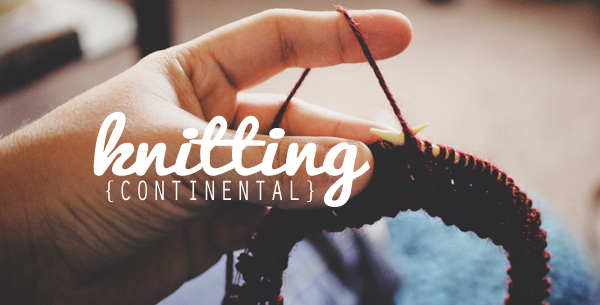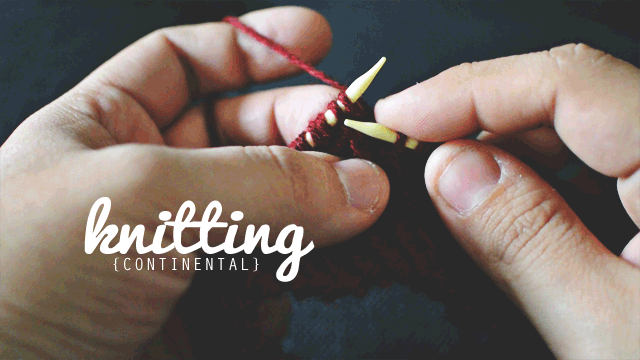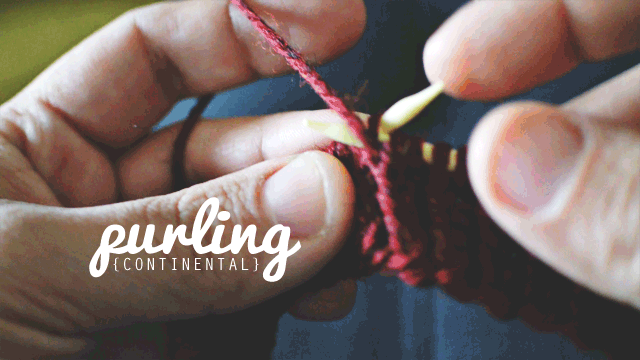
Continental knitting: Sounds worldly, doesn’t it? Let me first start with an admission: My own knitting adventure has been rocky at best. And it wasn’t until I explored knitting videos and tutorials that I realized something really important — there’s more than one way to knit! I learned to crochet before I learned to knit, and for the longest time I had been trying to knit with the yarn in my right hand. It felt completely backward to me because it was. I was trying to English knit, and my crochet hands weren’t having it. That’s when I discovered continental knitting.
What Is Continental Knitting?
This style of knitting is more like crochet because you hold the yarn in your left hand. It’s the opposite hand of your working needle, but it’s closer to your actual work. You put the needle through the next stitch, then use it to pick the yarn through. Because of this motion, continental knitting is sometimes called “picking.” It also called German knitting, left-handed knitting, or European knitting.
What are the advantages?
It’s way easier for crocheters to learn to knit using the continental method because the motions are more familiar. Don’t you want to convert your crocheting friends? I know I do!
It also has the potential to be faster when you’re working the knit stitch. Your work is held in your left hand, so it’s logical to have your working yarn in your left hand as well, right behind your work. The working needle just swoops in and picks the yarn through in one swift movement.
Even if you already knit, it’s really useful to know how to do it with both hands. And it will definitely make colorwork knitting a much quicker task!
Tension, tension, tension
Maintaining an even tension can be tricky if you’re not used to having the yarn in your left hand. Some knitters like to wrap the yarn around their pinky, then over the back of the rest of their fingers, ending in a drape over the index finger. Personally, I drape the yarn over my index finger, then use my pinky to grasp it against my palm. This allows the yarn to move freely and I’m able to apply more pressure against it if I need to. My thumb and middle finger help aid the movement of the stitches along the left needle toward the tip.
How I knit
The KNIT stitch

I still tend to move my left hand when I knit! As you can see, I’m not a complete “picker,” and I do tend to rock my index finger with the yarn over the needle. For me, it’s just more comfortable to do it this way, and it’s similar to how I crochet.
The PURL stitch

Continental purling is a little complicated. I use my thumb to hold the yarn over the needle as it’s going through the stitch. It took me a long time to get used to purling — it’s just so much slower than knitting! But practice makes perfect, and my nightmares have subsided (no joke).
The Complete Guide to Continental Knitting

Increase knitting speed, bolster efficiency and ditch hand strain as you conquer continental knitting for your best stitching yet. This is our most popular knitting class — don’t miss it!

I started to learn to knit 40 years ago. A coworker who was from Iceland was teaching me. She could knit the most complicated Icelandic sweaters in no time. Unfortunately I moved after completing one purl stitch scarf and never was able to progress. I watched others knit with the English style but it looked and felt awkward to me. I’m interested in trying again if this is the style of knitting that she was using.
Thank-you will get back to you.
I would like to learn continental knitting